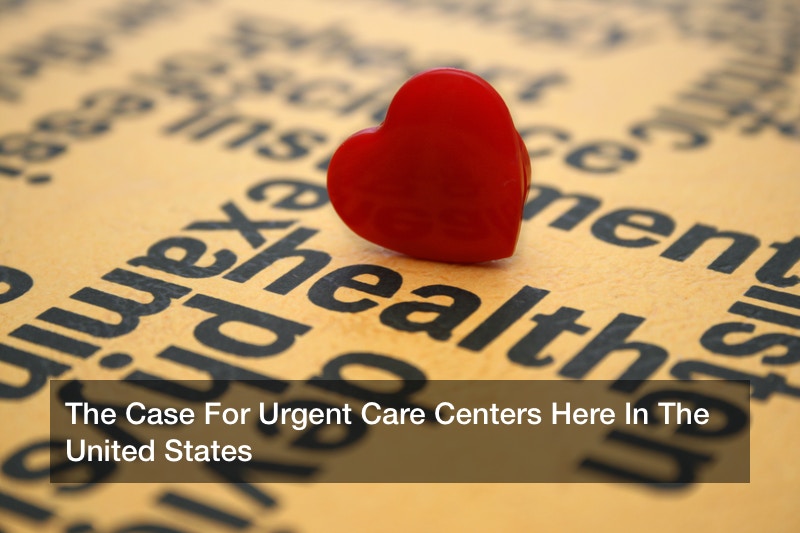
The Case For Urgent Care Centers Here In The United States

If you need medical attention, it can be a difficult thing to determine where to seek it. After all, going to a general care practitioner’s office might seem like the obvious choice, but it is one that isn’t always an option for a number of reasons. For one thing, such doctor’s offices are typically closed in the evenings, the early mornings, and during most weekends. They’re likely to be closed for a number of holidays throughout the year as well.
And for many people, taking time off of work during the week to get in to see a doctor at such an office really isn’t a possibility. A lack of transportation during the day can get in the way as well. Of course, those who do not have health insurance (or a particularly good kind of health insurance) can find themselves very limited as to what kinds of doctors they can see as well.
For such people, and for those who find themselves needing medical attention when their normal doctor is not in the office, going to the emergency room can often seem like the only choice. But the emergency room is not ideal – unless, of course, you are facing an actual medical emergency. For one thing, emergency room wait times are incredibly long, often spanning at least an hour, on average, if not even more time spent waiting than that. In addition to this, going to the emergency room – though they will accept all patients, insurance coverage or not – can be quite expensive, typically not costing anything less than $500 and oftentimes costing considerably more, depending on the medical attention that is needed.
In many cases, going to a local urgent care center is a much better option for receiving medical attention. And urgent care centers are becoming more viable and more popular than ever before, seeing as many as three million patients at more than 7,000 urgent care locations all throughout the country. With more than 20,000 doctors and medical professionals employed at these walk in clinics, finding affordable medical attention is easier now than ever before.
And urgent care centers can treat a wider variety of conditions than many people actually realize, with up to 80% of all such clinics actually able to diagnose and treat fractures and provide medical attention in other serious cases as well. Nearly three quarters of urgent care centers, for instance, can provide IV fluids as well, in cases where patients in need of medical attention are dehydrated and in need of fluids. In many case, urgent care treatment is comparable to the treatment and medical attention that one would receive in the typical emergency room setting, as less than 5% of all urgent care cases (around 3% of them, to be more specific) must be sent to an emergency room. On the contrary, however, up to 65% of all of the cases seen in the emergency room – and typically no less than 44% of them – could have received adequate medical attention at a local walk in urgent care center instead.
More minor needs for medical attention can be treated at the typical urgent care location as well, of course. For instance, simple infections are diagnosed and provided with medical attention (usually a course of antibiotics) are commonly seen in urgent care centers all throughout the country. Urinary tract infections are one such infection, as there are more than eight million UTIs diagnosed over the course of just one year here in the United States alone. In addition to this, ear infections are also quite commonly seen in urgent care centers, as they are very prevalent in children, as the shape and length of their ear canals contributes to them on what is sometimes a quite frequent basis.
And urgent care centers have short wait times too, with more than 90% of all urgent care locations seeing their patients in less than half of an hour at the very most, on average. More than half (around 60%) are event able to see their patients in only 15 minutes or so.